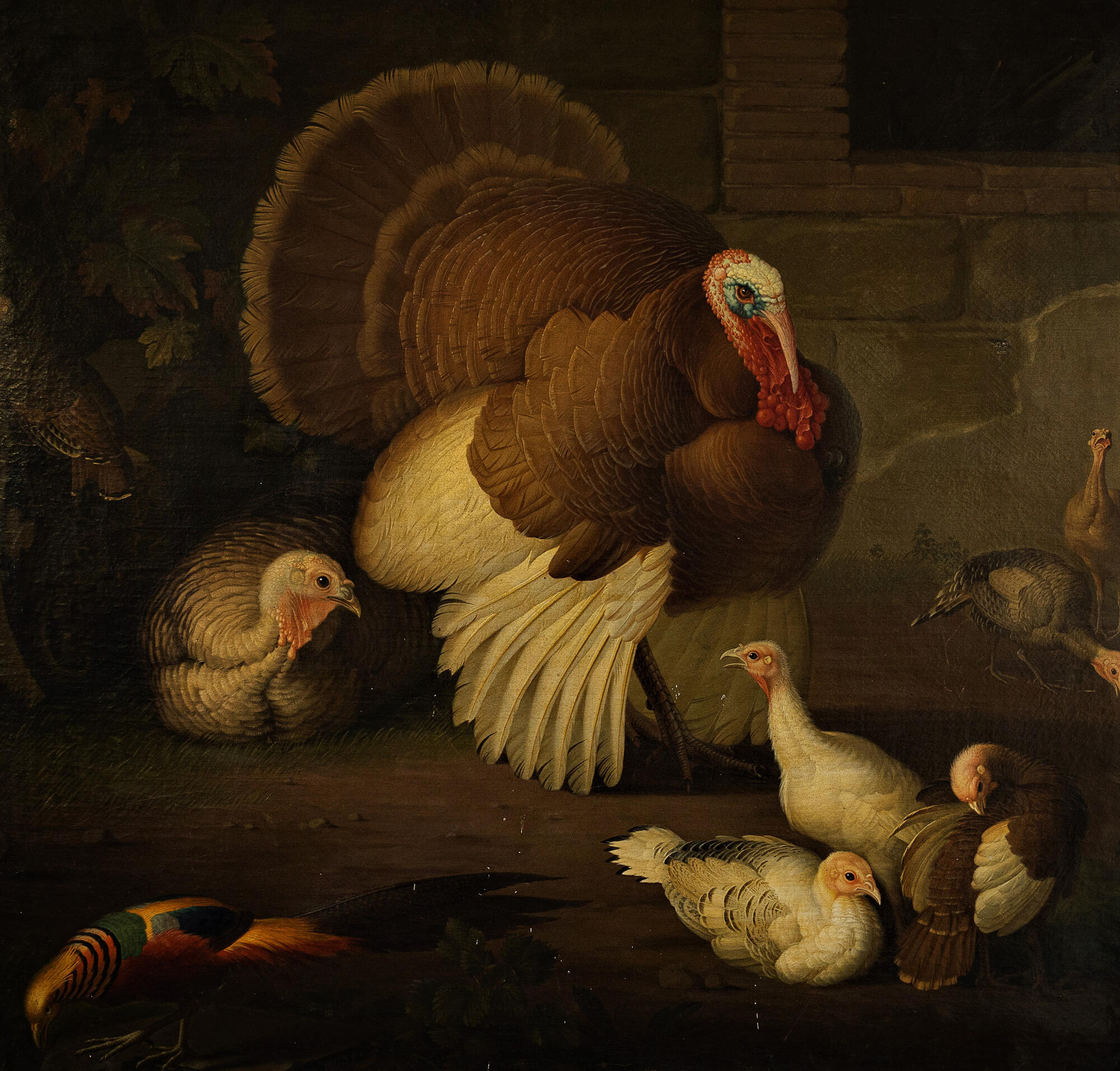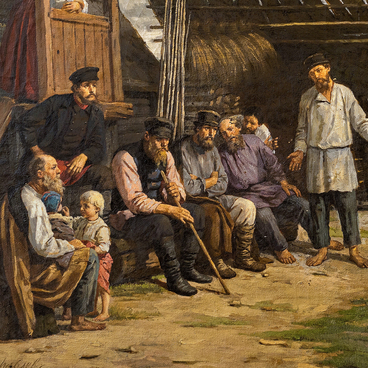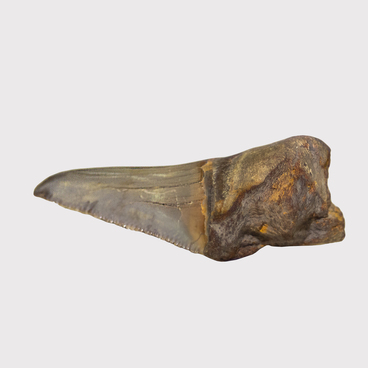Wenzel Peter, an Austrian artist of Czech origin, painted his picture ‘Turkey-cock’ in Rome in the early 19th century.
This work belongs to the animalistic genre. Animals were the main motifs and objects of such pictures.
Animalism became an independent genre only in the 16th century. At this time, its basic principles were formed: the animal should be depicted in close-up, reliably, and with emphasized characteristic features.
During his work on ‘Turkey-cock’, Wenzel used glazing — the technique of applying translucent paints over the main color or the canvas ground. Through this, the artist created a deeper and richer color in different shades. The picture theme is allegorical — Wenzel depicted the feathered family in the way that artists traditionally depicted people’s families, in a group portrait or genre scenes. By using this technique, he likened birds to people.
Johann Wenzel Peter was born in Karlovy Vary in the family of a gunsmith Johann Georg Peter. In his youth, he studied gunnery and even designed his own pistol. Then he moved to Vienna, where he began working as a coin engraver.
With the support of Joseph von Kaunitz, the Austrian ambassador to the Papal court, Wenzel left for Rome in 1774 to study sculpture. But under the influence of the German neoclassical artist Anton Mengs, he took an interest in painting, and from 1781 he began to specialize in animalistic art.
From 1784 to 1785, Wenzel painted the casino lobby, which was built on the territory of Villa Borghese. He created about 162 images of different animals for the interior. Wenzel’s new patron, Prince Marcantonio Borghese, helped him to get into the circle of Roman artists, and soon his works were in private and museum collections in Germany, the Czech Republic, France, Spain, and Russia.
In 1812, Wenzel became a professor at the Art Academy of St. Luke. In 1831, Pope Gregory XVI bought 20 paintings by Wenzel for his residence, the Apostolic Palace. Today, the Vatican Pinacoteca maintains the largest collection of the artist’s works, including the paintings “Adam and Eve in the Garden of Eden” and “A Lion and Tiger in Combat”.
This work belongs to the animalistic genre. Animals were the main motifs and objects of such pictures.
Animalism became an independent genre only in the 16th century. At this time, its basic principles were formed: the animal should be depicted in close-up, reliably, and with emphasized characteristic features.
During his work on ‘Turkey-cock’, Wenzel used glazing — the technique of applying translucent paints over the main color or the canvas ground. Through this, the artist created a deeper and richer color in different shades. The picture theme is allegorical — Wenzel depicted the feathered family in the way that artists traditionally depicted people’s families, in a group portrait or genre scenes. By using this technique, he likened birds to people.
Johann Wenzel Peter was born in Karlovy Vary in the family of a gunsmith Johann Georg Peter. In his youth, he studied gunnery and even designed his own pistol. Then he moved to Vienna, where he began working as a coin engraver.
With the support of Joseph von Kaunitz, the Austrian ambassador to the Papal court, Wenzel left for Rome in 1774 to study sculpture. But under the influence of the German neoclassical artist Anton Mengs, he took an interest in painting, and from 1781 he began to specialize in animalistic art.
From 1784 to 1785, Wenzel painted the casino lobby, which was built on the territory of Villa Borghese. He created about 162 images of different animals for the interior. Wenzel’s new patron, Prince Marcantonio Borghese, helped him to get into the circle of Roman artists, and soon his works were in private and museum collections in Germany, the Czech Republic, France, Spain, and Russia.
In 1812, Wenzel became a professor at the Art Academy of St. Luke. In 1831, Pope Gregory XVI bought 20 paintings by Wenzel for his residence, the Apostolic Palace. Today, the Vatican Pinacoteca maintains the largest collection of the artist’s works, including the paintings “Adam and Eve in the Garden of Eden” and “A Lion and Tiger in Combat”.



